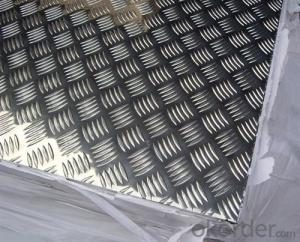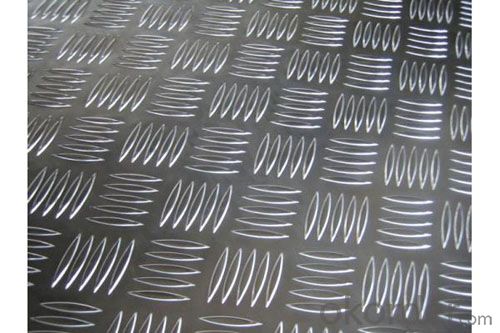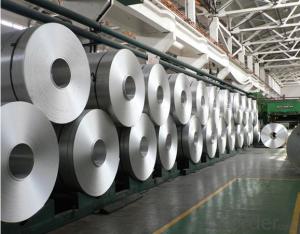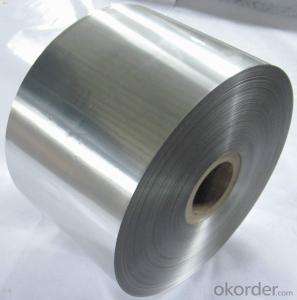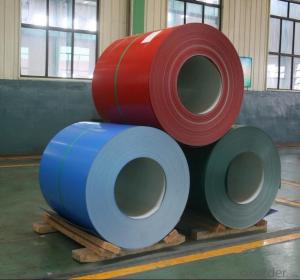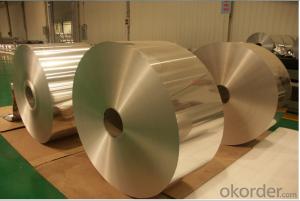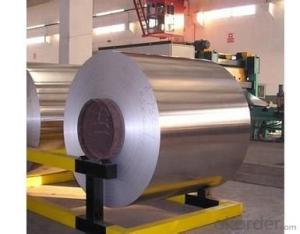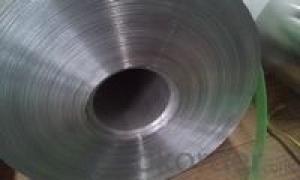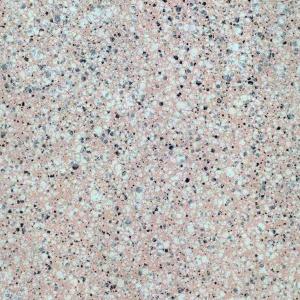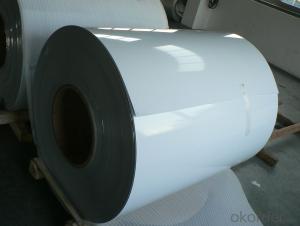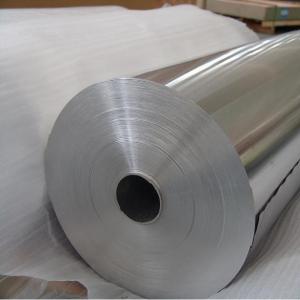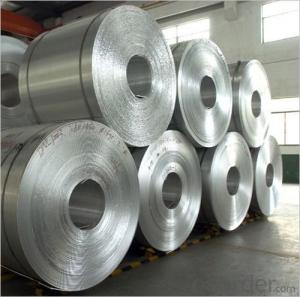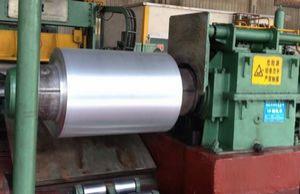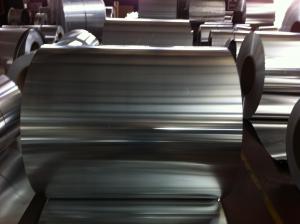1050 Competitive Price Brazing Aluminum Coil Tread Plate
- Loading Port:
- China main port
- Payment Terms:
- TT OR LC
- Min Order Qty:
- 5 m.t.
- Supply Capability:
- 5000 m.t./month
OKorder Service Pledge
OKorder Financial Service
You Might Also Like
Specification
1. Description of 1050 Competitive Price Aluminum Tread Plate
Aluminium Tread Plate is practical, decorative, durable and economical. Ideal for a variety of uses, including kickplates, doorways, door protectors, flooring, Industrial Settings (stairs, walkways), Vehicle modifications. 5 bar chequer plate can also be used decoratively.
Aluminium Tread plate is a light-weight metal sheet with a regular pattern of raised diamonds. The added texture reduces the risk of slipping.
2. Specifications of 1050 Competitive Price Aluminum Tread Plate
| Alloy No. | Thickness (mm) | Width (mm) | Length (mm) | Temper | |
| A1050,A1060, A1070,A1100 | 1.0-10 | 20-2200 | 20-8000 | H12,H22,H14,H16,H18, H24,H26,etc | |
| 3A21,A3003,A3105,A3004 | 1.0-10 | 20-2200 | 20-8000 | H14,H18,H24,etc | |
| A5052 ,A5005,A5083,A5754 | 1.0-10 | 20-2200 | 20-8000 | H18,H24,H32,H34,H111,H112 ,etc | |
| A6061,A6082,A6063 | 1.0-10 | 20-2200 | 20-8000 | T4,T6,,etc | |
| A8011 | 1.0-10 | 20-2200 | 20-8000 | H12,H22,H14,H16,H18,H24,H26, etc | |
| Packing : Export wooden pallets. The bundle wegiht not exceed 2MT. Loading:by 1x20GP, 1X20GP can load about 18MT | |||||
| Standards:ASTM-B209. EN573-1, GB/T3880.1-2006 | |||||
| Quality of material: totally free from defects like white rust, oil patches, roll marks, edge damage, camber, dents, holes, break lines, scratches and free from coil set | |||||
| Application : Mainly used insigns, billboards, building exterior decoration, bus body, high-rise buildings and factories wall decoration, kitchen sink, lamp, fan leaves, with pieces of electronic, chemical equipment, sheet metal processing parts,deep drawing or spinning hollowware, welding parts, heat exchangers, bell surface and disk, plate, kitchenware, decorations, reflective devices, ect | |||||
| MOQ | 5 tons | ||||
| Payment term: | T/T,L/C | ||||
| Delivery Time | 20 days after 30% T/T payment or receiving L/C copy | ||||
| Kind attention : Specifications can be customized as the customer’s requirements. | |||||
3. Feature of 1050 Competitive Price Aluminum Tread Plate
1.High temperature resistant
2.Weathering resistant
3.Scrubbing resistant
4.Sound insulation
5.Acid or alkali proof
6. Fireproof
7.Light weight material is easy to construct and install
4. Certificate:
SGS and ROHS(if client request, paid by client), MTC(plant provided), Certificate of Origin(FORM A, FORM E, CO), Bureau Veritas and SGS (if client request, paid by client), CIQS certificate
5. Image of 1050 Competitive Price Aluminum Tread Plate
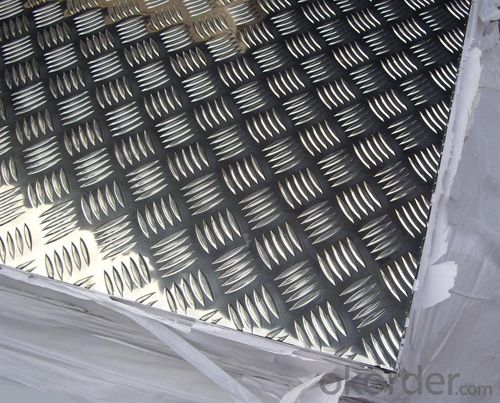

6. FAQ
1) What is the delivery time?
Dpends on actual order, around 20 days
2) What is the QC system:
We have QC staff of 20 persons and advanced equipment, each production is with MTC traced from Aluminum ingot lot.
3) What market do you mainly sell to?
Australia, America, Asia, Middle East, Western Europe, Africa etc
- Q: Can aluminum coils be used in food processing applications?
- Yes, aluminum coils can be used in food processing applications. Aluminum is a highly versatile and commonly used material in the food industry because of its numerous benefits. Aluminum coils are lightweight, durable, and have excellent thermal conductivity, making them ideal for applications that require even and efficient heat transfer. In food processing, aluminum coils are often used in equipment such as heat exchangers, evaporators, and refrigeration units. They are used to cool, heat, or maintain the temperature of various food products during processing, storage, or transportation. The excellent thermal conductivity of aluminum ensures that heat is evenly distributed, helping to preserve the quality and taste of the food. Additionally, aluminum is a non-toxic and non-reactive metal, which means it does not affect the flavor or composition of the food being processed. It also has a natural resistance to corrosion, ensuring that the coils do not contaminate the food and are easy to clean and maintain. Furthermore, aluminum is a sustainable and recyclable material, aligning with the growing demand for environmentally friendly practices in the food industry. Its lightweight nature also contributes to energy efficiency and reduced transportation costs. Overall, aluminum coils are a safe, efficient, and reliable choice for food processing applications, meeting the stringent requirements of the industry while maintaining the quality and safety of the processed food.
- Q: Can aluminum coils be used in the production of aluminum siding?
- Yes, aluminum coils can be used in the production of aluminum siding. Aluminum coils are commonly used in the manufacturing process of aluminum siding due to their durability, lightweight nature, and resistance to corrosion. These coils are usually processed through a coil coating line, where the aluminum is coated with a protective layer to enhance its performance and aesthetics. The coated aluminum coils are then formed and shaped into the desired siding panels, which can be installed on residential or commercial buildings. Aluminum siding is a popular choice for its low maintenance requirements, longevity, and ability to withstand various weather conditions.
- Q: Aluminum is a transition metal, woudn't the stock naming system apply to this formula?
- Aluminum oxide is best represented as Al2O3. Hope that helps.
- Q: How do aluminum coils contribute to the fire resistance of products?
- Aluminum coils contribute to the fire resistance of products due to their inherent properties. Aluminum has a high melting point, which means it can withstand high temperatures before it starts to melt or degrade. This property makes aluminum coils able to dissipate heat effectively, preventing the rapid spread of fire. Additionally, aluminum does not release flammable gases when exposed to heat, reducing the risk of combustion and aiding in fire suppression. Overall, the use of aluminum coils in products enhances their fire resistance and helps to contain or slow down the spread of fire.
- Q: I am shopping for new Rollerblades and see their newer skates have Aluminum framesand not the composite which I feel is more sturdier. What do you think of the aluminumframes? I was not impressed.
- This Site Might Help You. RE: Rollerblade in line skates-Aluminum frames? I am shopping for new Rollerblades and see their newer skates have Aluminum frames and not the composite which I feel is more sturdier. What do you think of the aluminum frames? I was not impressed.
- Q: Are aluminum coils available in custom sizes?
- Yes, aluminum coils are available in custom sizes. Aluminum coils are versatile and can be manufactured to meet specific size requirements. This flexibility allows for a wide range of applications across various industries. Whether it's for HVAC systems, transportation, construction, or other purposes, aluminum coils can be custom-made to fit the specific needs of a project. Custom-sized aluminum coils ensure a perfect fit and optimal performance, offering greater efficiency and cost-effectiveness.
- Q: Can aluminum coils be used in curtain wall systems?
- Yes, aluminum coils can be used in curtain wall systems. Aluminum is a popular material choice for curtain walls due to its lightweight, durable, and corrosion-resistant properties. Aluminum coils can be easily fabricated and formed into the desired shapes and profiles required for curtain wall systems, making them a suitable option for this application.
- Q: Aluminum inventory of the company, placed for a little longer, there will be surface oxidation, white spot shape, after cleaning into black spots, affecting the use of. Is there a better and convenient way to save it?
- Aluminum coil formation prevents oxidation of aluminum coils.In the aluminum coil chemical treatment to prevent oxidation of the surface of the aluminum layer to prevent corrosion, and increase after coating adhesion and corrosion resistance of the coating, conversion layer appearance color, golden yellow or green blue, the main function in ensuring the consistency of coating and film combination.
- Q: How does the alloy composition affect the properties of aluminum coils?
- The alloy composition of aluminum coils has a significant impact on their properties. Aluminum is often alloyed with other elements such as copper, manganese, magnesium, and zinc to enhance specific characteristics. One of the key properties affected by the alloy composition is the strength of the aluminum coils. Copper and zinc alloys, such as the popular 6061 or 7075 aluminum alloys, are known for their high strength, making them suitable for structural applications. On the other hand, manganese and magnesium alloys, such as the 3003 or 5052 aluminum alloys, offer improved formability and are commonly used in the construction of automotive components or packaging materials. The alloy composition also affects the corrosion resistance of aluminum coils. For instance, the addition of magnesium in alloys like 5052 or 5083 enhances their resistance to corrosion in marine environments, making them ideal for boat building or other marine applications. Copper alloys, on the other hand, possess excellent resistance to atmospheric corrosion and are frequently utilized in outdoor structures or architectural applications. Another crucial property affected by the alloy composition is the thermal conductivity of aluminum coils. Copper alloys have high thermal conductivity, making them efficient for heat transfer applications like heat exchangers or radiators. Aluminum-magnesium alloys, such as 3003 or 3004, have lower thermal conductivity, making them suitable for applications where heat dissipation is desired, such as heat sinks in electronic devices. Furthermore, the alloy composition can impact the electrical conductivity of aluminum coils. Copper alloys, due to their high electrical conductivity, find applications in electrical wiring and conductors. However, aluminum-magnesium alloys, despite having lower electrical conductivity than copper, are still widely used for electrical transmission lines and overhead power cables due to their lightweight nature. In summary, the alloy composition of aluminum coils plays a crucial role in determining their properties. It affects the strength, corrosion resistance, thermal conductivity, and electrical conductivity of the coils, allowing them to be tailored for specific applications.
- Q: how tall is a crushed aluminium soda can compared to a non crushed one.i need measurements in centimeters please.ALSO!! AN IMAGE that actually has both of the two with the measurements would be SUPER HELPFUL
- I don't understand why you can't just measure a can, then crush it and measure it again. And with the number of cellphones kids have today, every one can take a picture. Why do we need to do this for you?
Send your message to us
1050 Competitive Price Brazing Aluminum Coil Tread Plate
- Loading Port:
- China main port
- Payment Terms:
- TT OR LC
- Min Order Qty:
- 5 m.t.
- Supply Capability:
- 5000 m.t./month
OKorder Service Pledge
OKorder Financial Service
Similar products
Hot products
Hot Searches
Related keywords
